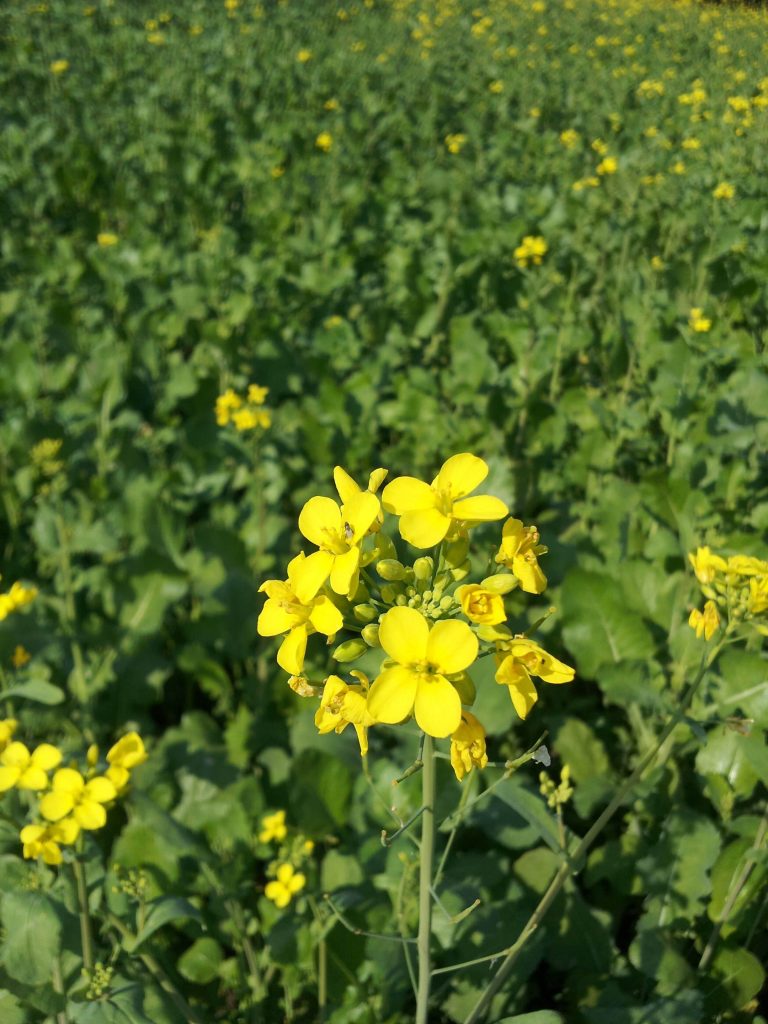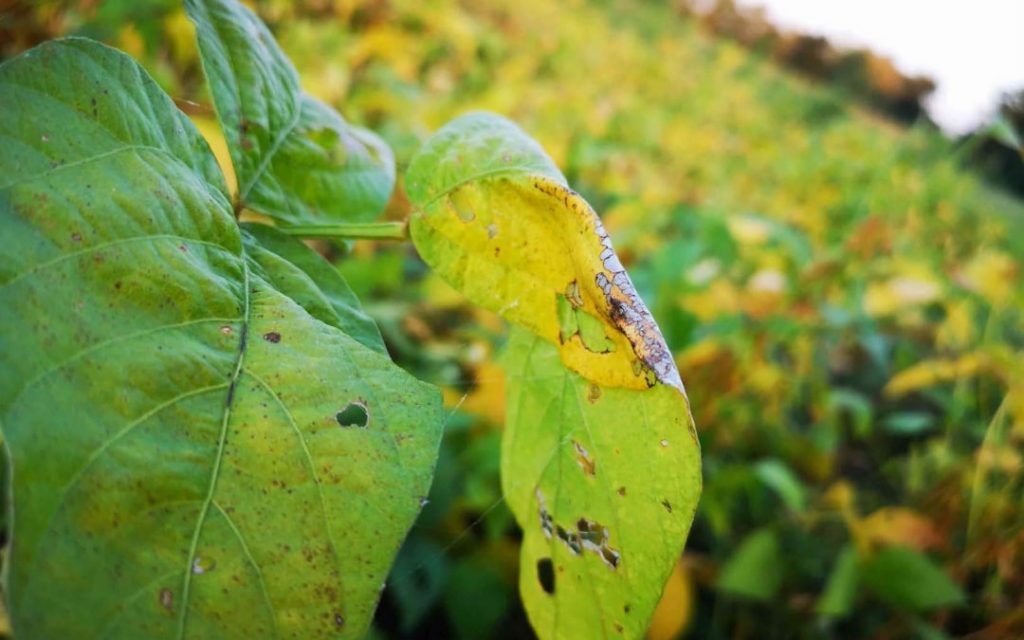Soybean farming is traditionally a part of Indian Agriculture. It is a golden-colored bean-shaped crop.
The crop is extensively high in protein content. Soybean is largely consumed for its edible oil.
Soya is also a consumable milk product. Enormously utilized in the form of neutral tasting soya chunks.
Indian loves this for its low-fat content and rich omega 3 fatty profile. This crop helps in fetching a good amount of revenue.
If you are looking into soybean farming, there should be a proper layout designed accordingly.
Essentials for soybean farming
When planning for soybean farming, you should have a complete idea about its necessities.
Soil
Soybean gels along loamy, and well-drained soil. It should have a PH balance between 6-7.5. Water-logged soil hampers the growth of this golden crop. So, it should be taken care of on a disciplinary basis.
Planting Season
Mid of April till May or June is the best suited time for planting soybeans.
Seed Selection
Go with a genetically trusted variety of seeds for soybean farming. The seeds should be free from diseases, healthy, and fit for planting.
Irrigation
As it is a Kharif crop, which means sown at the onset of monsoon, no more irrigation is required. But when it comes to a drought prone area, field needs to be watered properly. Due to rains, care should be taken to choose well-drained soil.
Preparing land for soybean farming
This is the initial step towards soybean farming. For a good production, it must be ensured that the land is not sown with soybean crop earlier. Or you can say, field should have a clean history.
It leads to the growth of small unwanted plants on the land.
Also, it becomes a habit for pathogens that might develop due to previous cultivation. So, the best way out is crop rotation. This ensures a perfect crop.
Ridges and furrows should be made according to the need of the method to be practiced.
Planting soybean
Planting soybean depends upon the seed and the weather. It is a myth that the sooner you sow them the earlier you get them.
Make it crystal clear the ground has to be moisture-laden and the temperature should be heading towards a warmer effect.
Ensure that the crop must not be threatened by the frost effect. A warm climate maintains the soil temperature for healthy cropping.
For amazing results plant them in April end. Although over time lot of techniques have been evolved for a perfect yield. But the weather is still the deciding factor.

Tool requirement and seed spacing
The tool requirement remains the same for soybeans and corn. A corn planter ensures an accurate depth and firm fix in the soil.
Being soil type and atmospheric conditions, the deciding factor, you need to go according to them.
Planting the soybean seeds 1.1/4 to 1.1/2 is the advised depth for an impressive yield. Last you can go till 2 inches but the variety must have the capacity to thrive excellently well.
Spacing is not a compulsory practice to be followed in the case of soybeans. Though a space of 30 inches is great, as intimacy between the plants might generate bugs and pathogens.
Also Read: What is Mango Farming all about? A complete guide
How long does it take for soybeans to grow?
A soybean farming attains maturity at 3-4 months from being planted. Rest the quality of the seeds also determine their growth rate.
Don’t forget all the necessary conditions for growth shows impressive results. And the sprouting phase comes in 3 to 7 days of sowing seeds.
Remember to feed them with good fodder and they start cropping within time.
How long does it take for soybeans to grow can be achieved by providing them with all the necessary required things for growth?
Weed control in soybean farming
Cropping up of weed is the major issue in soyabean farming. To check the growth is a task to be carried on a routine. A continuous effort has to be made for discouraging the weeds.

You can look for some weed dismantling elements to be added to the soil for the relief. These defoliants for stopping weeds get life on adding water to them. Adding water is done to moisten them and not water-logging.
This is done generally after 24-30 from planting the seeds.
Soybean growth stages
The production in soyabean farming is classified into 4 stages:
- Flowering:
The reproduction process starts when the seeds start coming to life. Soybean is typically a night-lover crop. When they get longer nights than day, seed instigates flowering.

By this time, the plants have attained a height of 15 inches almost. Now, the flowers start emerging from the nodes of the stem. The flowers are placed between the leaf axil and are known as racemes.
These flowers turn into pods that bear the seeds. Then there are secondary racemes which are again dependent on the primary ones.
- Complete flower:
The complete blooming is attained when the flower reaches full size and opens up at the upper node on the stem. The emergence of a new flower slows down rendering space for the bloom.
Blooming indicates that the growth of soybean is at a rapid pace with the plants becoming 17-22 inches tall. Thereby the lateral roots becoming deeper and firmer to the soil.
In this, the plant has reached 50% of its height and growth. Prevention from insects, illness and hails increase the output rate at this time.
- Pod arrival
The pod arrival is a sign of the emergence of a bean. This is a crucial stage in the development of fruit. The plant is sensitive to any sort of damage.
As it can affect the pod size and number, bean size and number, and the seeds too. However, a prolonged flowering time can be helpful. The flowers disappear up to 70% as the pods appear and grow in size.
Now by this time the plant size is about 22 inches or more, which means almost near to maturity.
- Complete fruit
The pod grows in size and number heading towards completion. It marks the end of the soybean growth stages. The plant is fully grown by now bearing pods as the result.
The only thing to keep in mind is the irrigation part. Also protecting the plant from damage in the early growth period to get a healthy fruit at the end.
Pest and disease of soybean
Soybean farming is susceptible to pests. The pest and diseases of soybean affect their growth. Some of the common diseases are a bacterial blight, downy mildew, bollworm, and corn earworm moth.
All these pests hamper the growth and curb it by 15-20%. Proper treatment for pest and disease control in soybean farming is necessary to increase the production rate.
Must Read: Why Are My Spinach Leaves Turning Yellow
Pest and disease control in soybean farming
Fungicidal seed treatment is a preventive step for root rot or where the seeds are planted in wet soils. At the time of plantation, fungicides are applied to the soil. This protects the seeds and accelerates the growth.

Soybean rust can be checked by the proper and timely application of fungicides. These soybean scouts mean spots on the leaf must be checked timely to restrict the spread further.
Organic farming in soybeans
Organic farming is among the best soybean farming techniques. The farm is solely prepared for soybean farming. Although, we know that crop-rotation works wonder for soybeans.
A best tropical or temperate climate with good fertile or productive soil adds life to the farming. Good organic manures and timely weed check are the necessary elements for the acceleration of growth. In case of phosphate deficiency.
Crop-rotation is carried out to discourage soil damage. Fixing nitrogen level to the soil should be followed. The PH should rank between 6.5-7 for a great yield. Once fixing the soil needs for the farming. You can proceed further.
Now, go for crop-rotation as it focuses on curbing pests and enhances soil productivity too. Spacing should also be done. About 45-60 cm gap should be there to allow the crop to grow.
The organic soyabean farming technique is beneficial for soybean cultivation. It improves both the quality and quantity of production.
Soybean yield accounts for 18 to 35 quintals per harvest. With the passage of time yield of soybeans has gone amazingly high. Today, the organic soybean yield per acre accounts for 163 bu/ac.
Harvestation of soybeans
Harvesting of soybean ranges between 50 to 145 days from the plantation. At this time the leaves acquire a yellow color and droop down. You can see the soybean pods popping out of the plant. The seeds should be 15% moist at the time of harvest otherwise they tend to dry out easily.
Conclusion
Soybean farming is among the profit yield businesses. The soybeans are less input and high output crops. They fetch more return with minimum investment. Excellent management is more than enough.
High in demand in the form of seed oil, chunks, chaaps, yogurt, and much more. Having a cluster of benefits for pocket and health makes it fit for farming.
Weight management, keeps diabetes under control, improves digestion, and circulation in the body.
If you want to have your soybean venture, go ahead.

